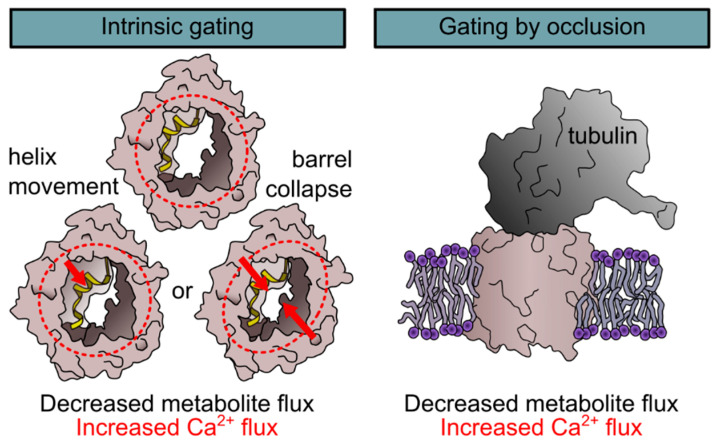Figure 1.
Mechanisms of voltage-dependent anion channels (VDAC) gating. Two mechanisms for the gating of VDACs were described, namely gating by an intrinsic conformational change (left) and gating by occlusion (right). The first is experimentally induced by voltage but is modulated by extrinsic parameters such as protein interactions, the lipidic environment or posttranslational modifications. Intrinsic gating results in a conformational change of a yet unknown nature. Several models ranging from a movement of the N-terminal α-helix to a collapse of the barrel were suggested. The second mechanism that was observed for VDAC gating is gating by occlusion by, e.g., free tubulin through a molecular plug model. Both mechanisms were shown to block metabolite flux and to induce a lower anion selectivity and, thus, an increased Ca2+ flux.

